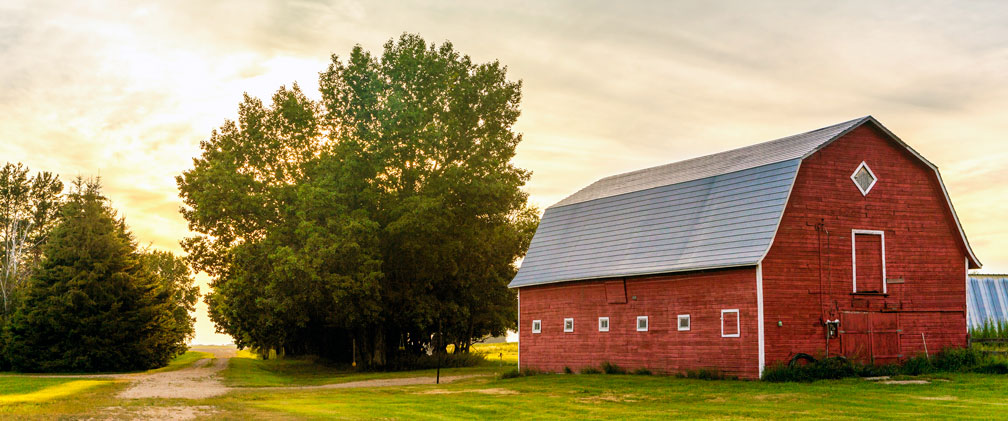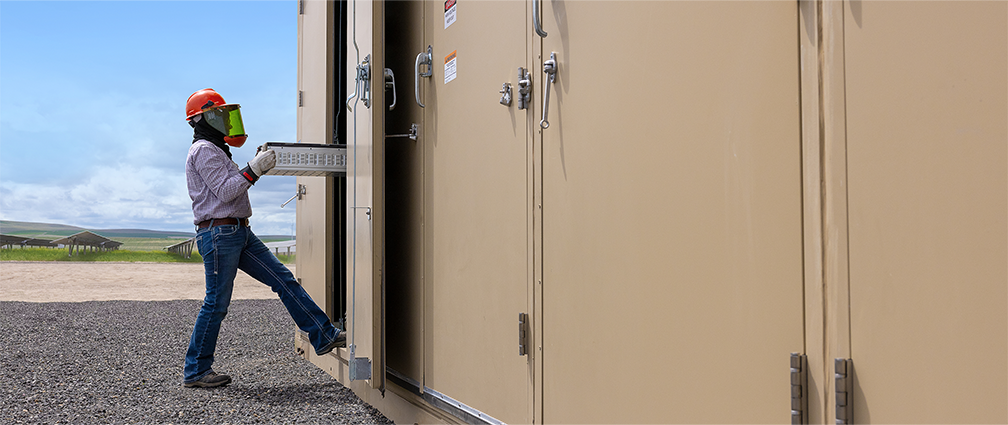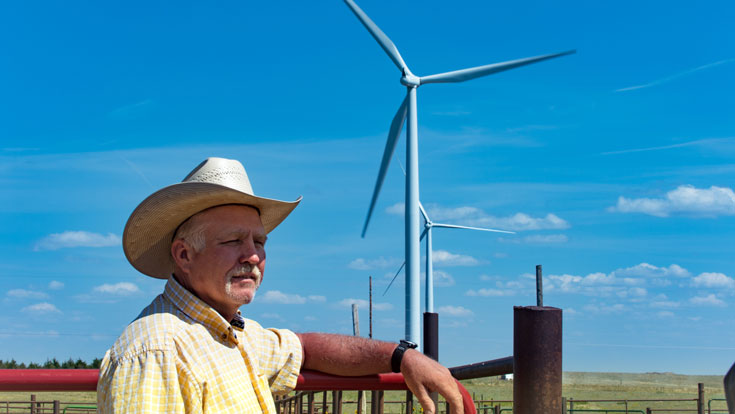Wild Plains Energy Center II

Do wind turbines negatively impact our health?
No. When properly sited, wind turbines are a safe and effective means of generating electricity.
Wind energy actually provides significant public health benefits by improving air quality, which helps to reduce asthma and breathing related illnesses.4
The first wind turbines came online in the U.S. in the 1980’s – and people have been safely living and working around wind turbines for generations.
The weight of scientific evidence, including more than 80 peer-reviewed studies, shows properly sited wind turbines are not related to adverse health effects.1,2 This includes concerns around: audible noise, low frequency noise, infrasound, and shadow flicker.
Studies have found the mere perception of a negative impact, known in the scientific-medical profession as the “nocebo” effect (the opposite of the “placebo” effect) can lead individuals who are subject to misinformation about wind energy to misreport negative health effects when there actually is no evidence for the health effects.3
Sources:
1 “Wind turbines and health: a critical review of the scientific literature,” R. McCunney, Journal of Occupational and Environmental Medicine 2014.
2 “Health effects and wind turbines: a review of the literature,” L. Knopper and C. Ollson, Environmental Health 2011.
3 “The Link Between Health Complaints and Wind Turbines: Support for the Nocebo Expectations Hypothesis,” F. Chrichton, Frontiers in Public Health, 2014.
4 “The climate and air-quality benefits of wind and solar power in the United States,” Millstein, Wiser, Bolinger and Barbose. Nature Energy, August 2017.
Sources:
1 Erickson, W. et. Al. “A Comprehensive Analysis of Small-Passerine Fatalities from Collision with Turbines at Wind Energy Facilities.” Plos One (September, 2014)

What impact will a wind farm have on my property value?
Multiple studies have concluded that wind farms pose no significant long-term impact to property values.
Wind energy projects drive economic development, job growth, and tax revenue for their host communities, which benefits landowners, neighbors, and land values in the area.
Landowners who host a wind turbine on their property earn regular lease payments that transfer with the sale of the property, adding to its value. While some potential property buyers may be hesitant to purchase land near wind turbines, academic studies show that the positive impacts of a wind energy project either balance or outweigh any negative impacts.
As an example, a study of more than 50,000 home sales among 27 counties in nine states found no statistical evidence that home prices near wind farms were affected by the wind farm.1 Another study conducted in Chatham-Kent, Ontario, found there was no statistically relevant relationship between the presence of a wind project and negative effects on property values.2
Sources:
1 Wind Farm Proximity and Property Values: A Pooled Hedonistic Regression Analysis of Property Values in Central Illinois. Jennifer L. Hinman, (May 2010).
2 A Spatial Hedonic Analysis of the Effects of Wind Energy Facilities on Surrounding Property Values in the United States. Hoen, B., Brown, J., Jackson, T., Wiser, R., Thayer, M. and Cappers, P. (2013). Lawrence Berkeley National Laboratory, Berkeley, CA. 151 pages.
3 County Assessor Reports Spike in Home and Property Values Near Calhan Wind Farm, 02/18/2016, The Gazette [Colorado], Ryan Maye Handy.
Additional Research:
The Impact of Wind Power Projects on Residential Property Values in the United States: A Multi-Site Hedonic Analysis. Hoen, B., Wiser, R., Cappers, P., Thayer, M. and Sethi, G. (2009). Lawrence Berkeley National Laboratory, Berkeley, CA. December, 2009. 146 pages. LBNL-2829E.

What happens at the end of a wind farm’s useful life?
A wind site is designed to operate for at least 20-30 years, during which time it will be carefully managed and maintained. Over time, we can also replace aging wind turbines with newer, more efficient technology to extend their useful lives for many more years.
When turbines are eventually decommissioned, we remove the wind turbines and return the landscape to its original condition.
To ensure taxpayers do not pay for removing any part of a wind farm, as part of a decommissioning, our company makes financial commitments to pay the full costs of removal.
In a typical decommissioning, all above-ground infrastructure is removed from the land. We approach the landowners prior to the decommissioning to determine, at their discretion, if they want any of the infrastructure (particularly the roads) left behind for the benefit of their operations.
This ensures farming, ranching and other future land uses can continue, unimpeded by any remnants of the wind site.
Sumner Energy Center

Does solar energy negatively impact our health?
No. People have been safely living and working around solar panels for decades. Solar energy emits no pollutants and the overall impact of solar on human health is overwhelmingly positive. In fact, studies have shown health-related air quality benefits from solar energy are worth even more than the electricity itself.1
Modern, photovoltaic (PV) solar panels are made of materials typical of those found in electronic equipment and are encased, so as not to pose a concern for the water supply or public health.2
Sources:
1 Wiser, Ryan et al. “On the Path to SunShot: The Environmental and Public Health Benefits of Achieving High Penetrations of Solar Energy in the United States.” National Renewable Energy Laboratory 2016
2 “Health and Safety Impacts of Solar Photovoltaics,” N.C. State University, N.C. Clean Energy Technology Center, May 2017.

Does a solar project impact the environment?
No form of energy is free from environmental impact; however, solar energy has among the lowest impacts as it emits no air or water pollution.
Protecting wildlife and sensitive natural habitats is a priority for NextEra Energy Resources.
As part of our development process, we conduct thorough wildlife studies and ensure each site complies with all local, state and federal environmental regulations.
What are solar panels made of?
Solar photovoltaic (PV) panels typically consist of glass, polymer, aluminum, copper and semiconductor materials that can be recovered and recycled at the end of their useful life.
To provide decades of corrosion-free operation, solar cells are encapsulated from air and moisture between two layers of plastic, with a layer of tempered glass and a polymer sheet or industrial laminate. In the same way a windshield cracks but stays intact, a damaged solar cell does not generally create small pieces of debris.
Crystalline silicon panels represent approximately 90 percent of solar panels in use today. Research has shown they “do not pose a material risk or toxicity to public health and safety.”1
Thin-film solar panels represent a small percentage of panels in use today; some use a stable compound called cadmium telluride or other semi-conductor materials. Research has shown the tiny amount of cadmium in these panels does not pose a health or safety risk.2
Sources:
1 “Health and Safety Impacts of Solar Photovoltaics,” N.C. State University, N.C. Clean Energy Technology Center, May 2017.
2 V. Fthenakis, K. Zweibel, “CdTe: Real and Perceived EHS Risks.” National Center for Photovoltaics and Solar Program Review Meeting, 2003
3 S. Weckend, A. Wade, G. Heath. “End of Life Management: Solar Photovoltaic Panels.” International Renewable Energy Agency, June 2016.

What impact will a solar project have on my property value?
There is no evidence to indicate a solar project will impact neighboring property values. For example, a 2021 study by CohnReznick1, a Chicago-based firm that specializes in property valuation, looked at home sales in proximity to six solar farms in Illinois, Indiana, Michigan and Minnesota. It found no measurable impact on property values adjacent to solar farms.
Importantly, a solar project brings numerous economic benefits to a community, including the potential for millions of dollars in additional tax revenue (or payments in lieu of taxes) which can be used to enhance schools, roads and essential services – enhancing both the quality of life and overall value of the community. Solar projects can deliver these economic benefits without making additional demands or impact on community services.

What happens at the end of a solar project’s useful life?
Decommissioning is the process of removing all elements of a solar project and returning the land to its original condition.
Modern solar projects are designed to operate for at least 25-30 years, during which time they are carefully managed and maintained.
We often replace aging solar panels with newer, more efficient technology to extend their useful lives. However, should there no longer be a demand for the project after 30 years, we will decommission it.
To ensure taxpayers do not pay for removing any part of a solar project, our company makes financial commitments to pay the full costs of decommissioning.
This process typically includes removing and disposing of all above-ground infrastructure including solar arrays, inverters, concrete foundations and pads, and fences.
Webb Road Energy Storage and Drury Road Energy Storage

How does a battery energy storage system work?
Battery energy storage can provide valuable services to help balance and improve the efficient operations of the larger power grid. Storage can also complement renewable generation by storing wind and solar energy when its plentiful and distributing it to customers when its most-needed. Batteries can make more renewable energy available over more hours of the day – modeling a traditional power plant.
Energy from the power grid or from renewable energy sources is delivered via a bi-directional inverter, which converts the energy from alternating current (AC) into direct current (DC). Today's batteries can only store DC. This energy goes into an array of batteries that is typically housed within a battery container or a building structure.
When the energy is needed on the power system, the inverters are then used again, but this time to convert the DC from the batteries into AC. Once the power has been transformed, it is stepped up in voltage and subsequently sent to an on-site substation or directly to a distribution or transmission line.
A Battery Management System monitors the individual cells and controls the voltage, temperature and current for the safe, reliable transfer of energy. The system automatically shuts off if the batteries are operating outside of predefined parameters.
The electricity is then distributed to homes, schools, businesses and other consumers.

What are the components of a battery energy storage sytem?
A battery energy storage system consists of:
- Individual battery cells.
- These cells are collected into modules and housed in a specially designed, climate-controlled storage container.
- The racks fill containers, not unlike a storage container you’d see on a ship or truck.
- The containers are paired with inverters to convert DC-AC electricity.
- Can be paired with a renewable energy asset (solar, wind) or stand alone.
Battery storage container

Individual battery module


What kind of batteries are used for energy storage?
We primarily use lithium-ion battery technology, which has benefited from years of research and development and has been proven to be safe, efficient and cost-effective for utility-scale battery energy storage. We are always evaluating other battery chemistries and technologies to continue to advance this growing industry.
Can the batteries be recycled?
The materials used in battery energy storage facilities are valuable even after more than 20 years of use. Many of the battery manufacturers we work with offer to reclaim their lithium batteries as the parts can be recycled and used in new products.
In addition to re-use in new battery cells, the recycled materials extracted can be used in a wide variety of consumer products such as lithium grease, concrete additives and some glass products.
- NextEra Energy Resources requires our vendors to provide recycling certificates to ensure all applicable regulations are followed in the recycling and disposal of battery storage related equipment.
- Following EPA guidelines, we do not dispose of batteries in municipal landfills.
- Requirements for the disposal of lithium-ion batteries are found in Part 273 of Title 40 Code of Federal Regulations.
If maintained properly, depending on the use case, a battery system can last 20 or more years and can be replenished over time.

Do battery energy storage systems present a fire risk?
Fires involving battery energy storage systems are rare. At NextEra Energy Resources, the safety of our employees, neighbors and the public are always our highest priority. Responsible energy production begins with preparation from day one.
- Batteries used in our facilities undergo rigorous industry testing and certification by Underwriters Laboratories (UL). This ensures that the cell and module designs are robust.
- Battery modules are housed in fully enclosed containers, like shipping containers.
- Each container is equipped with fire protection and explosion control systems to comply with the National Fire Protection Association.
- We have sensors that alarm when an abnormal condition arises. Additionally, our facilities are monitored 24/7 by our Renewable Operations Control Center, which can remotely shut down any affected site.
- We work and train with local first responders and fire officials to coordinate any response, in the unlikely event of a fire.






